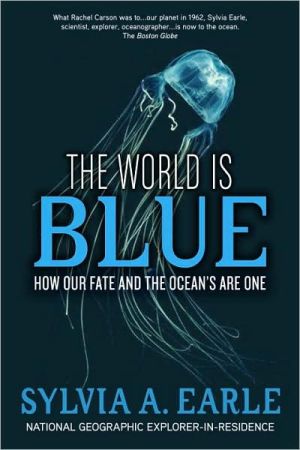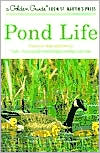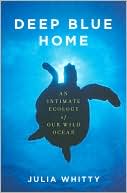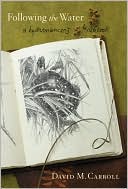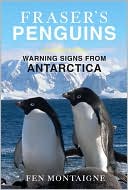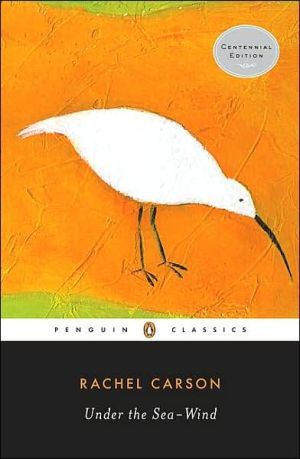World Ocean Census: A Global Survey of Marine Life
"[A] distillation of a decade of exploration, magnificently illustrated and eloquently written. Some will treasure World Ocean Census as a valuable reference, others as a place to find white-knuckle adventures."\ -- From the foreword by Sylvia Earle\ An insider's description of the comprehensive Census of Marine Life and what it reveals about a seriously threatened ecosystem.\ The Census of Marine Life was launched in 2000 with the goal of producing the first-ever ocean census by 2010. Two...
Search in google:
An insider's description of the comprehensive Census of Marine Life and what it reveals about a seriously threatened ecosystem. Library Journal The Census of Marine Life is a global network of scientists in more than 80 nations involved in a ten-year project to assess and explain the diversity of life in the oceans. On first examination, this appears to be a typical oversize book dedicated to beautiful underwater photography; however, in well-written text, Crist (American Gargoyles), Gail Scowcroft (associate director, Office of Marine Programs, Univ. of Rhode Island), and marine scientist James M. Harding Jr. describe the various aspects of the Census for the educated layperson. Illustrated with examples of creatures found in all parts of the oceans, including many newly discovered and never-before-described species, chapters cover the different project groups, how they are gathering and publishing data, and why this is important. Several one- to four-page inserts explain such concepts as hydrothermal processes and the global ocean current conveyor belt. VERDICT Intended to promote this important project, scheduled to be completed in 2010, this will appeal to readers attracted to nature photography as well as anyone interested in the ocean, science, or global climate change. Also useful for high school or college courses on climate, oceanography, or biology.—Maggie Roux, MBLWHOI Lib., Woods Hole, MA
Table of ContentsAcknowledgments Foreword by Sylvia Earle IntroductionPART ONE: WHAT LIVED IN THE OCEAN? 1 / The Known, the Unknown and the Unknowable The Great Unknown The Census of Marine Life2 / Painting a Picture of the Past What Once Lived in the Ocean Records of Decline In Quest of a Zero-Year Baseline Managing the Fisheries Charting a New Course of StudyPART TWO: WHAT LIVES IN THE OCEAN? 3 / Expanding the Use of Technology Reaching the Research Sites Using Sound to "See" Under Water Advances in Optical Technology Collecting Specimens Studying the Movements of Marine Life Identifying the Collected Species Census Data Available to the World4 / Animals as Ocean Observers Developments in Tagging Facing Extremes5 / Disappearing Ice Oceans Uncovering Hidden Oceans Surprises in the Southern Ocean Opening Windows of Knowledge6 / Unexpected Diversity at the Edges of the Sea Coral Reefs in the Northwest Hawaiian Islands The Gulf of Maine: Past and Present A New Habitat for Alaska The Way Forward7 / Unexplored Ecosystems: Vents, Seeps, Seamounts and Abyssal Plains Hydrothermal Vents Continental Margins and Cold-Water Seeps Seamounts Abyssal Plains8 / Unraveling the Mystery of New Life-Forms The Name Game Identifying the Drifters Where No One Has Gone Before A Window Below the Ice Eyes and Ears in the Deep Visualizing the Invisible Looking AheadPART THREE: WHAT WILL LIVE IN THE OCEAN? 9 / Forecasting the Future The Demise of the Great Sharks Changes in Fisheries Practice Help Whales10 / The Path Forward The Census Has Made a DifferenceGlossary Further Reading Photo Credits Index
\ about.com - Jennifer Kennedy\ I love books that can easily be read by both a layperson and a scientist, and this is one of them. There's enough background information that anyone could pick up this book and enjoy it, but enough technical information to make the book a useful reference for someone who works with marine life. 5/5 stars.\ \ \ \ \ \ AkN Science blogspot.com - N. S. Arun Kumar\ The book is at its best when it offers glimpses of the astonishing array of sea creatures revealed by the survey. It includes critical data that will be studied for decades to come....Hundreds of breathtaking, full-color photographs plunge one deep into the ocean to see some of the millions of species - from the smallest microbes to the largest whales - that dwell beneath the waves.\ \ \ \ American Reference Books AnnualThe World Ocean Census is compilation of a 10-year research effort into examining marine life.... Overall, this is an attractive book and it is modestly priced. Most general readers will find topics of interest.\ \ \ \ \ \ BooklistThe excitement of discovery, particularly the almost constant revelation of species new to science, shines through what could have been dry reportage, and numerous photographs, many of the new species, illuminate the text.\ \ \ \ \ \ ChoiceThis volume is a visual treat with its beautiful photographs of marine life from all parts of the ocean. Recommended.\ \ \ \ \ \ OceanographyAs the Census [of Marine Life] draws to a conclusion, it is an appropriate time to assess its accomplishments. World Ocean Census: A Global Survey of Marine Life is the first attempt to present these accomplishments in a format that is accessible to a broad audience. With its striking photography and high production standards, the book unfolds as a visual celebration of the Census. Marine biodiversity and the excitement of ocean exploration come alive as the reader thumbs through the pages and marvels at images collected from Census projects throughout the world ocean. As a coffee-table book, World Ocean Census succeeds admirably.... The most memorable message of World Ocean Census is that we must explore the ocean and understand its biodiversity before it's too late.... World Ocean Census is a start in the right direction.\ \ \ \ \ \ Saskatoon Star PhoenixThis lavishly illustrated book comes in three parts: What Lived in the Ocean?, What Lives in the Ocean?, and What Will Live in the Ocean?, and along the way talks of the global ocean conveyor belt, the disappearing ice oceans, and the mystery of new life forms. The creatures range from the microscopic to a great white shark, cruising with its mouth wide open.\ \ \ \ \ \ USA TodayAbout the only corner of the planet neglected by [a] world atlas, the ocean teems with hidden stories uncovered in this first-ever census of marine life... The survey reveals some of those hidden denizens of the deep, from the vampire squid to the flamingo tongue snail to the shoulderbar soldierfish, each as exotic-looking as their names. Census scientists have tagged seals, salmon and sooty shearwater shorebirds with transmitters to follow migrations. Arctic and Antarctic expeditions reveal changing populations under the pressure of a warming ocean. And everywhere looms the threat of extinction for overfished seafood stocks. "Above all, the breakthroughs in knowledge gained, and awareness of the magnitude of what remains to be discovered, inspire hope that the greatest era of ocean exploration - and ocean care - will now begin.\ \ \ \ \ \ Nature Vol 462/19The book is at its best when it offers glimpses of the astonishing array of sea creatures revealed by the survey... [It] is full of high-quality photographs [that] reveal strange, recently discovered species... Fittingly, World Ocean Census begins and ends with spectacular photos of jellyfish, which are supremely suited to exploiting the niches created by overfishing. How humans respond to the trends revealed by the census will largely determine whether this 'jellification' of the ocean will continue, or if crippled marine populations may have a chance to recover.\ \ \ \ \ \ Journal of the Norwegian Medical AssociationThe articles are written in an open and accessible style.\ \ \ \ \ \ Science Books and FilmThe general public, students, and even scientists interested in getting up to speed on the latest will find this book a captivating read. I would like to think that every high school library would have a copy of the book and that advisors would bring it to the attention of students contemplating a career in things oceanic. The works of William Beebe, Rachel Carson, and Jacques Cousteau inflected the careers of past and present marine scientists; this book promises a future in studies of the global ocean that those pioneers could never have envisioned.\ \ \ \ \ \ SciTech Book NewsSince 2000, thousands of scientists have been engaged in the Census of Marine Life, with the goals of determining what lived in the world's oceans in the past, what lives there now, and what will live there in the future. This visually stunning and highly readable book deals with the adventures and experiences of the scientists involved with the Census, and with how they are gathering data using both modern research vessels and sources as diverse as old whaling logbooks, fish bones found in archaeological digs, restaurant menus, and old photographs and postcards. Individual sections focus on topics including the logistics of the census and the cutting-edge technology used to project the uncertain future of the world's oceans. Profusely illustrated (mainly in full color), this volume should appeal to a wide audience.\ This visually stunning and highly readable book deals with the adventures and experiences of the scientists involved with the Census, and with how they are gathering data using both modern research vessels and sources as diverse as old whaling logbooks, fish bones found in archaeological digs, restaurant menus, and old photographs and postcards. Individual sections focus on topics including the logistics of the census and the cutting-edge technology used to project the uncertain future of the world's oceans. Profusely illustrated (mainly in full color), this volume should appeal to a wide audience.\ \ \ \ \ \ ARCTICFor those with a natural curiosity about our ocean planet, this new book by an award-winning author and two experienced marine educators is indeed timely and well-written. Superbly designed, the book evokes the majesty and mystery of life in the oceans through the use of captivating photographs, novel graphics, and easy-to-read text. Thorough and consistently high editorial standards are readily apparent.\ \ \ \ \ \ Library JournalThe Census of Marine Life is a global network of scientists in more than 80 nations involved in a ten-year project to assess and explain the diversity of life in the oceans. On first examination, this appears to be a typical oversize book dedicated to beautiful underwater photography; however, in well-written text, Crist (American Gargoyles), Gail Scowcroft (associate director, Office of Marine Programs, Univ. of Rhode Island), and marine scientist James M. Harding Jr. describe the various aspects of the Census for the educated layperson. Illustrated with examples of creatures found in all parts of the oceans, including many newly discovered and never-before-described species, chapters cover the different project groups, how they are gathering and publishing data, and why this is important. Several one- to four-page inserts explain such concepts as hydrothermal processes and the global ocean current conveyor belt. VERDICT Intended to promote this important project, scheduled to be completed in 2010, this will appeal to readers attracted to nature photography as well as anyone interested in the ocean, science, or global climate change. Also useful for high school or college courses on climate, oceanography, or biology.—Maggie Roux, MBLWHOI Lib., Woods Hole, MA\ \

